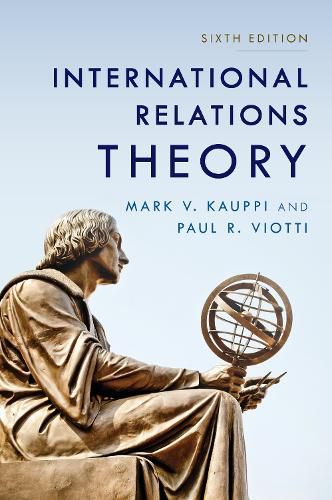Readings Newsletter
Become a Readings Member to make your shopping experience even easier.
Sign in or sign up for free!
You’re not far away from qualifying for FREE standard shipping within Australia
You’ve qualified for FREE standard shipping within Australia
The cart is loading…






We propose a sixth edition of our textbook that, since it was first published in 1987, has influenced two generations of IR scholars and practitioners.
After four decades of teaching, we have learned to communicate difficult or complex ideas, concepts, and theories succinctly, and without watering down their content. Addressing the complexities of IR theory in particular, our book is written in plain language readily understood by both graduate and undergraduate audiences, as well as English-speaking and English-as-second-language (ESL) international students. Over the years, IR doctoral students-many of whom are now professors or serve in policy-related positions, have approached us at conferences to confide that they found our book helpful in preparing for their doctoral exams.
We do not present laundry lists of IR theories one finds in other books. By contrast, we employ a framework or taxonomy of alternative images-or world views-that underlie present-day IR theory (i.e., realism, liberalism, economic structuralism, and the English School). Driven by one or another of these images, theorists also wear different interpretive lenses that profoundly influence their theorizing (positivism, feminism and those related to phenomenological understandings-post-modernism, critical theory, and constructivism). Both images and interpretive lenses have their place in our IR theory framework. This taxonomy weaves or integrates diverse and cross-cutting theoretical threads or strands into a meaningful whole cloth approach not found in other volumes
$9.00 standard shipping within Australia
FREE standard shipping within Australia for orders over $100.00
Express & International shipping calculated at checkout
We propose a sixth edition of our textbook that, since it was first published in 1987, has influenced two generations of IR scholars and practitioners.
After four decades of teaching, we have learned to communicate difficult or complex ideas, concepts, and theories succinctly, and without watering down their content. Addressing the complexities of IR theory in particular, our book is written in plain language readily understood by both graduate and undergraduate audiences, as well as English-speaking and English-as-second-language (ESL) international students. Over the years, IR doctoral students-many of whom are now professors or serve in policy-related positions, have approached us at conferences to confide that they found our book helpful in preparing for their doctoral exams.
We do not present laundry lists of IR theories one finds in other books. By contrast, we employ a framework or taxonomy of alternative images-or world views-that underlie present-day IR theory (i.e., realism, liberalism, economic structuralism, and the English School). Driven by one or another of these images, theorists also wear different interpretive lenses that profoundly influence their theorizing (positivism, feminism and those related to phenomenological understandings-post-modernism, critical theory, and constructivism). Both images and interpretive lenses have their place in our IR theory framework. This taxonomy weaves or integrates diverse and cross-cutting theoretical threads or strands into a meaningful whole cloth approach not found in other volumes